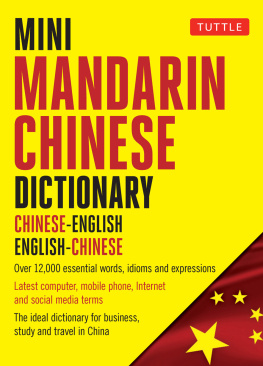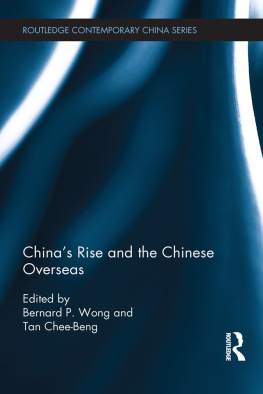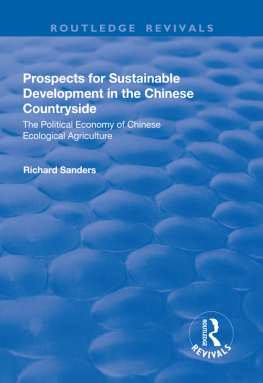TABLE OF CONTENTS
II Emigration and Emigrants
III The Warp and Woof of Chinese Associations
IV The Nature of the Chinese Community
V Clanship
VI Rural Economy and Clan Relationships
VII Occupational Identification and Bazaar Economy
VIII Bazaar Economy and the Rubber Trade
IX The Problem of Power
X Relations with the Mother Country
APPENDIX I The Early History of the Chinese in Sarawak
APPENDIX II The Hakka Kongsi in Borneo
APPENDIX III Chinese population by dialect groups (Table)
LIST OF MAPS
1. SARAWAK: ADMINISTRATIVE DIVISIONS
2. SOUTHERN CHINA: THE PROVINCES OF KWANGTUNG AND FUKIEN. Showing approximate place of origin of different dialect groups.
3. SARAWAK: KUCHING-BAU-SERIAN AREA OF 1st DIVISION: Distribution of Chinese according to locality of origin.
LIST OF TABLES AND DIAGRAMS
Page Table
1 Land and Population in Kwangtung.
2 Dominant Groups in Three Small Chinese Associations in Kuching.
3 Dominant Groups among the Chinese Associations in Kuching.
3A Dominant Clans of Dominant Groups of Chinese Associations in Kuching.
4 Tien Clan in Sarawak 1949.
5 Names and Number of Members of Hoppu Clans.
6 Clan Relationships of Oversea Chinese living along Hie Simang-gang Road.
7 Clan Relationships Among the Oversea Chinese living along the Road from Kuching to Bau.
7A Clan Relationships Among the Oversea Chinese Living in the Coastal Areas of the First Division.
8 Distribution of Tsai clan members along the Simanggang Road (1949).
9 Distance From School.
10 Ownership of Chinese Shops in Kuching.
11 Relationship Between Dialect Similarity and Occupational Grouping in Kuching.
12 Occupational Identification in Sibu.
13 The Coffee Shop Business.
14 Ladder of Rubber Transactions Among the Overseas Chinese in Sarawak.
15 Dialect Differences Among the Rubber Dealers of Different Ranks.
16 Dialect and Occupation.
17 Dialect and Economic Status.
18 Export Duty Paid On Local Products July/November 1948.
19 Relations between Exporters in Kuching and Dealers in Singapore.
20 Cost per picul of Rubber Exported.
21 Import Relationships between First Division Sarawak and Singapore.
22 Chinese Publications dealing with Home News available In Sarawak.
23 Family Remittances to China through Approved Collecting Agents.
APPENDIX The Chinese Population of Sarawak: Dialect Groups (From the III Census Report 1947).
AUTHORS PREFACE
The problems of the Chinese overseas particularly in South East Asia are of pressing significance at the present time. The most satisfactory study would embrace a full account of the relations of the overseas Chinese with foreign governments and with indigenous peoples. This would require a far-flung and detailed comparative survey for which I have neither the time nor the competence. Instead, I have taken one small field the oversea Chinese community in Sarawak and concentrated upon certain aspects only of its social life. If I am accused of omission, of looking at the trees and failing to see the forest, then I must plead guilty, but it is my hope that here in microcosm may be seen more clearly some of the factors which operate throughout the area.
Under the auspices of the Colonial Social Science Research Council I spent about thirteen months in Sarawak from September 1948 to October 1949. My mandate was to study the role of associations in the Chinese Community. I am deeply grateful for the numberless friends informants and officials who gave me their confidence, their time and their help. In London I have received every possible assistance, especially from Dr. E. R. Leach whose constructive criticism fell on almost every page of my manuscript, from Professor R.W. Firth, whose interest has been my encouragement, from Dr. D. Schneider and Mrs. N. Richardson, who read and commented upon several chapters, from Mr. R. van der Sprenkel, who tirelessly translated from the Dutch, and from Mrs. E.M. Chilver, who smoothed my official path. Last but certainly not least I must express my debt to Miss Barbara E. Ward who was my close collaborator throughout the period of final drafting. It is not easy for a Chinese to make himself fully comprehensible in the idiom of English scholarship. If I have achieved that end the credit is due to Miss Ward rather than myself.
JU-KANG TIEN
London, June 1950.
EDITORIAL PREFACE
The account of the Chinese of Sarawak given in this book is a slightly amended version of a report submitted to the Sarawak Government in the Summer of 1950 under the title A Report on the Organisation of the Chinese Community in Sarawak.







